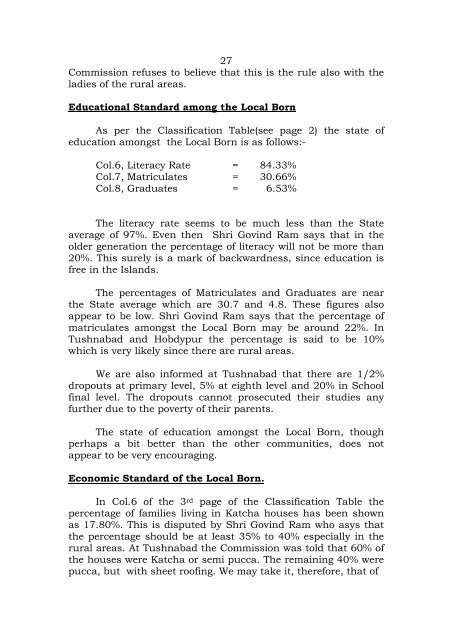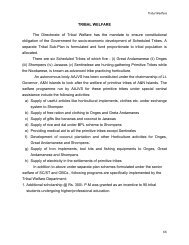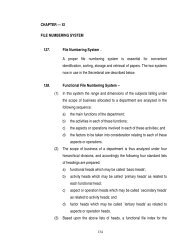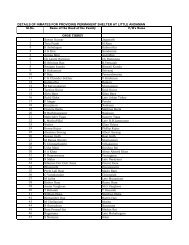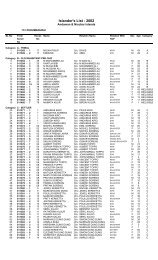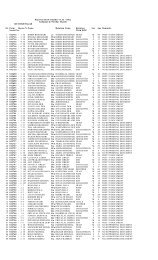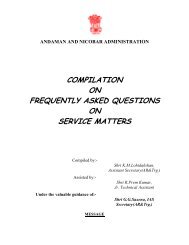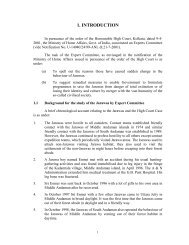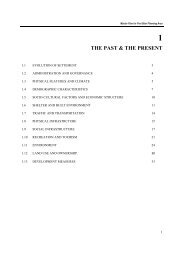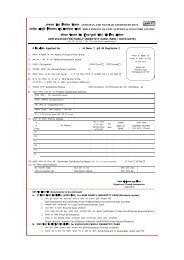Part III - Andaman and Nicobar Islands
Part III - Andaman and Nicobar Islands
Part III - Andaman and Nicobar Islands
Create successful ePaper yourself
Turn your PDF publications into a flip-book with our unique Google optimized e-Paper software.
27<br />
Commission refuses to believe that this is the rule also with the<br />
ladies of the rural areas.<br />
Educational St<strong>and</strong>ard among the Local Born<br />
As per the Classification Table(see page 2) the state of<br />
education amongst the Local Born is as follows:-<br />
Col.6, Literacy Rate = 84.33%<br />
Col.7, Matriculates = 30.66%<br />
Col.8, Graduates = 6.53%<br />
The literacy rate seems to be much less than the State<br />
average of 97%. Even then Shri Govind Ram says that in the<br />
older generation the percentage of literacy will not be more than<br />
20%. This surely is a mark of backwardness, since education is<br />
free in the Isl<strong>and</strong>s.<br />
The percentages of Matriculates <strong>and</strong> Graduates are near<br />
the State average which are 30.7 <strong>and</strong> 4.8. These figures also<br />
appear to be low. Shri Govind Ram says that the percentage of<br />
matriculates amongst the Local Born may be around 22%. In<br />
Tushnabad <strong>and</strong> Hobdypur the percentage is said to be 10%<br />
which is very likely since there are rural areas.<br />
We are also informed at Tushnabad that there are 1/2%<br />
dropouts at primary level, 5% at eighth level <strong>and</strong> 20% in School<br />
final level. The dropouts cannot prosecuted their studies any<br />
further due to the poverty of their parents.<br />
The state of education amongst the Local Born, though<br />
perhaps a bit better than the other communities, does not<br />
appear to be very encouraging.<br />
Economic St<strong>and</strong>ard of the Local Born.<br />
In Col.6 of the 3 rd page of the Classification Table the<br />
percentage of families living in Katcha houses has been shown<br />
as 17.80%. This is disputed by Shri Govind Ram who asys that<br />
the percentage should be at least 35% to 40% especially in the<br />
rural areas. At Tushnabad the Commission was told that 60% of<br />
the houses were Katcha or semi pucca. The remaining 40% were<br />
pucca, but with sheet roofing. We may take it, therefore, that of


